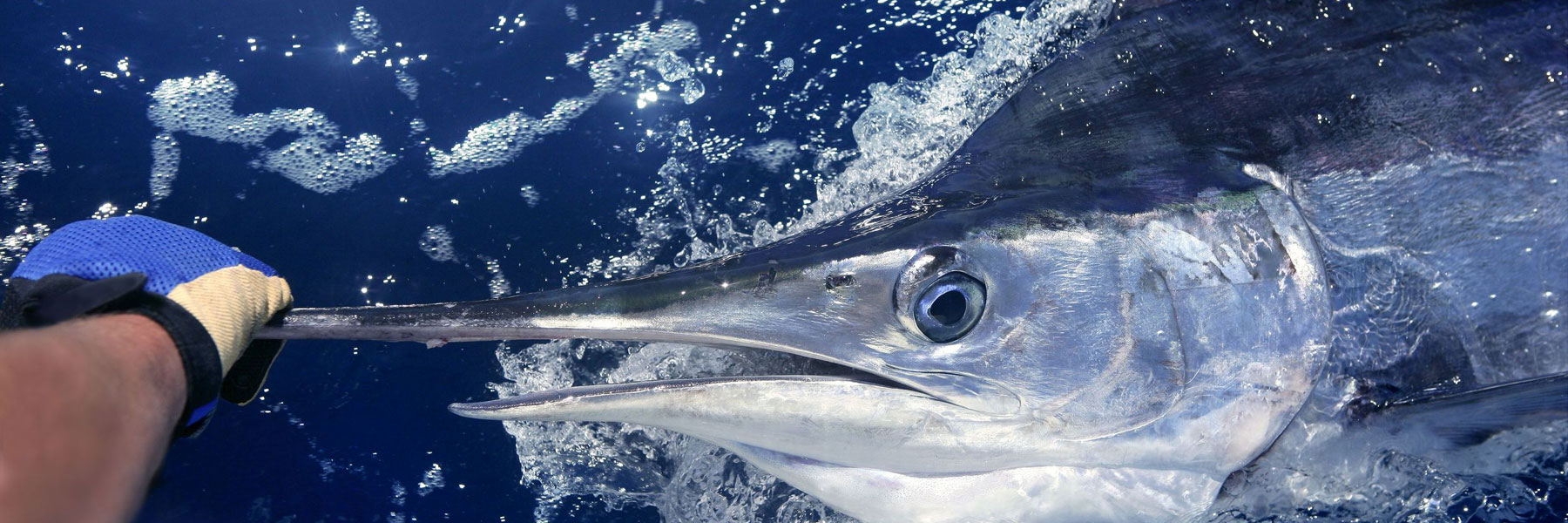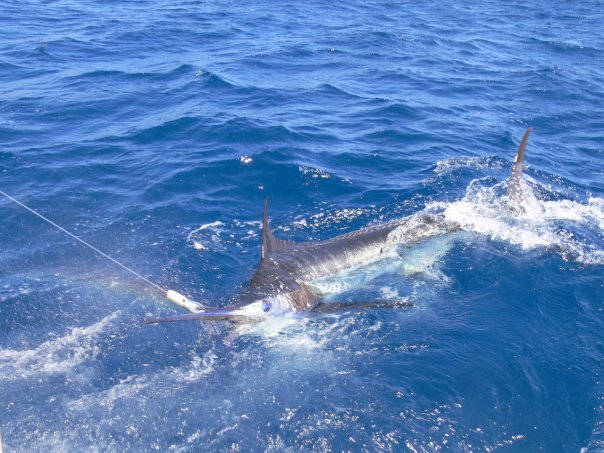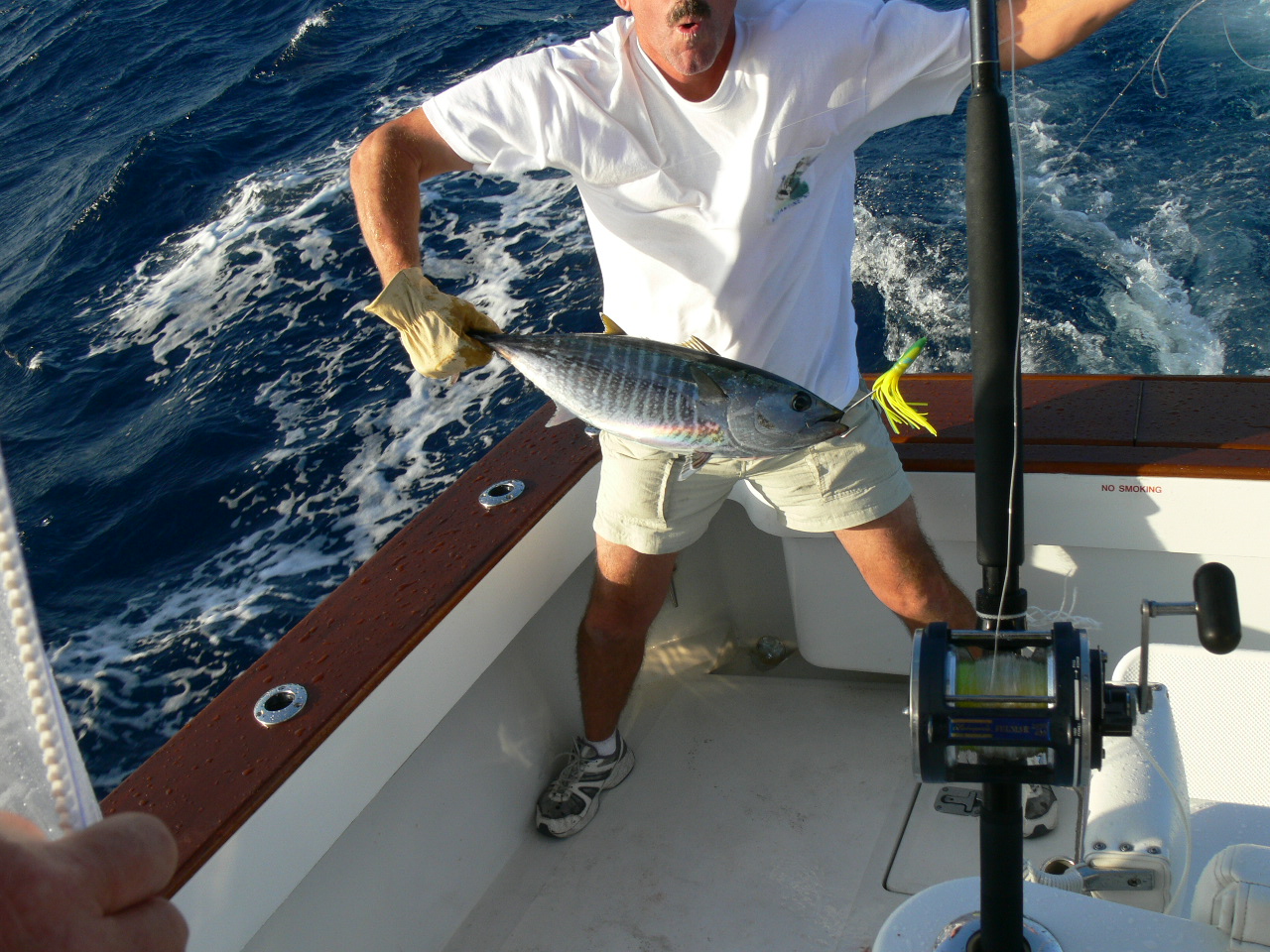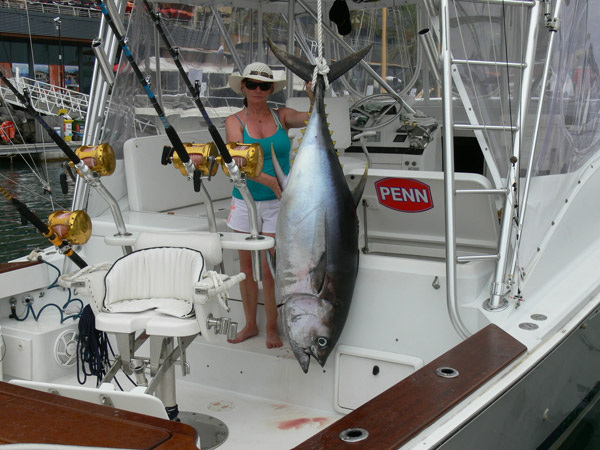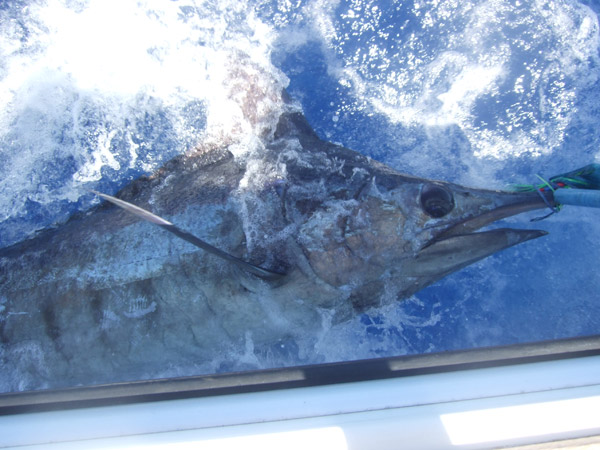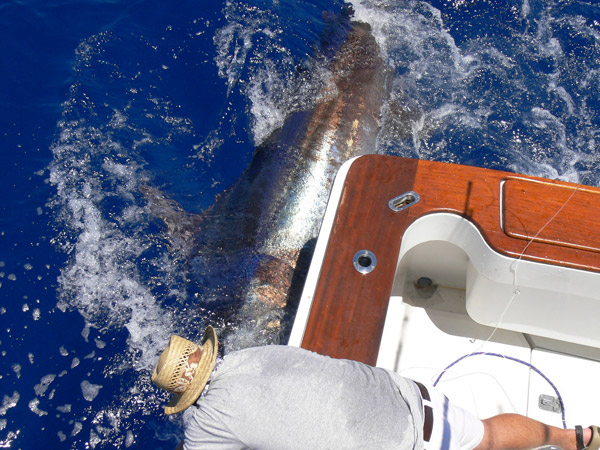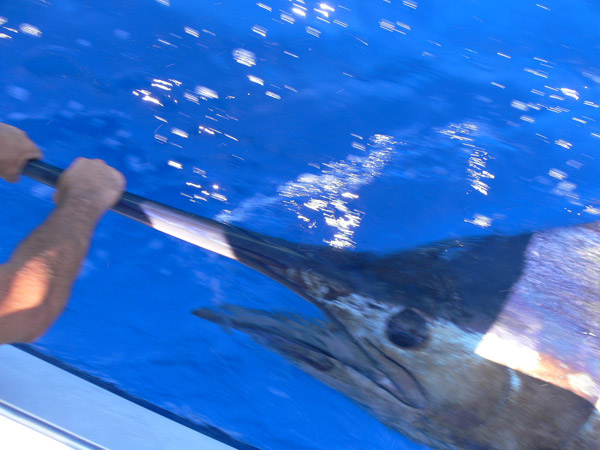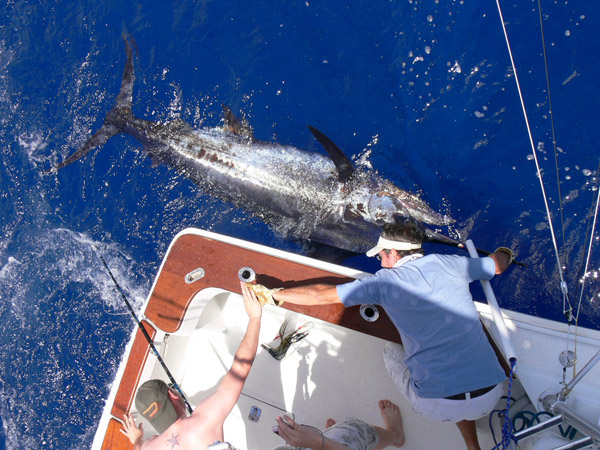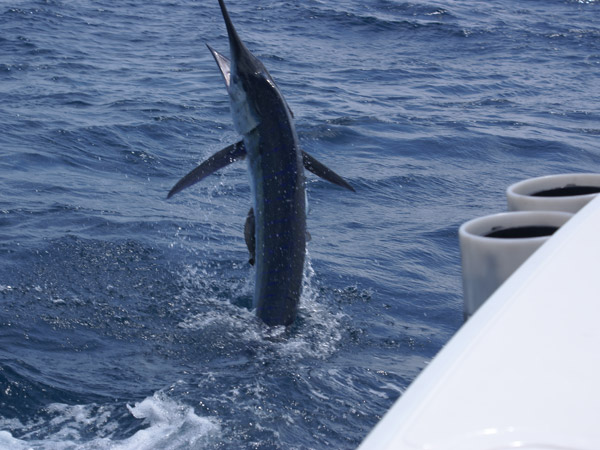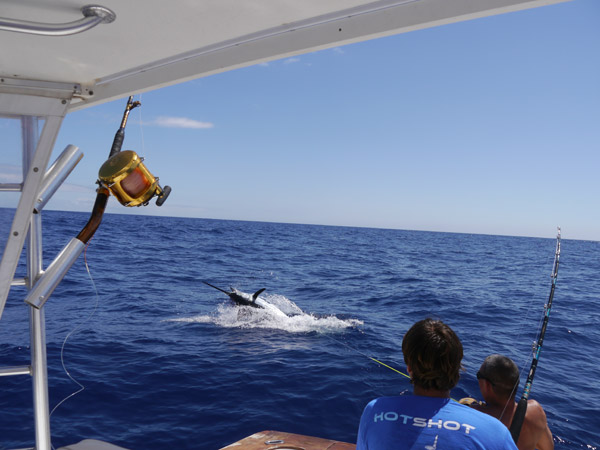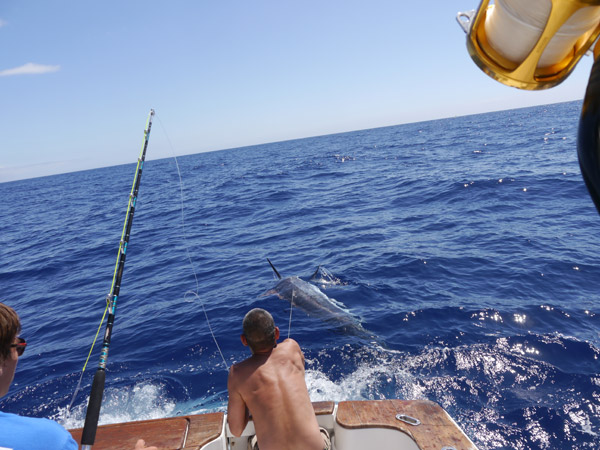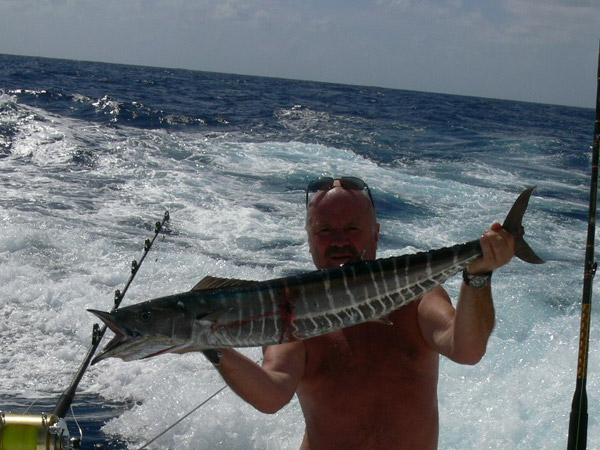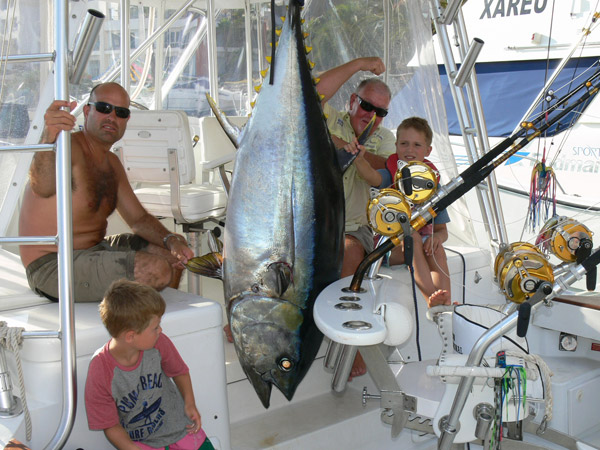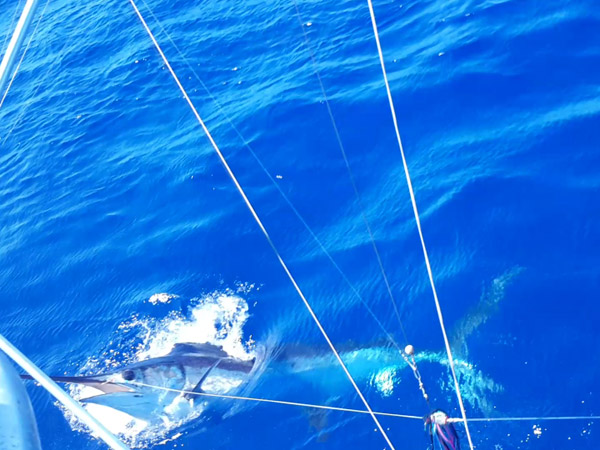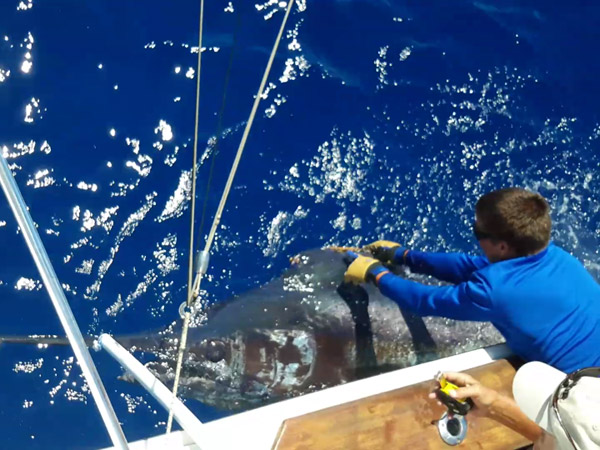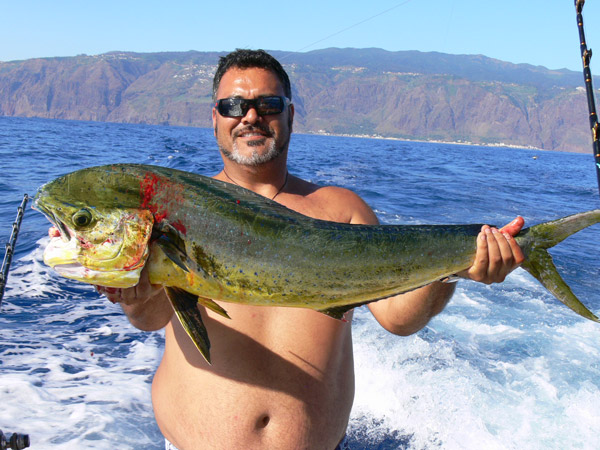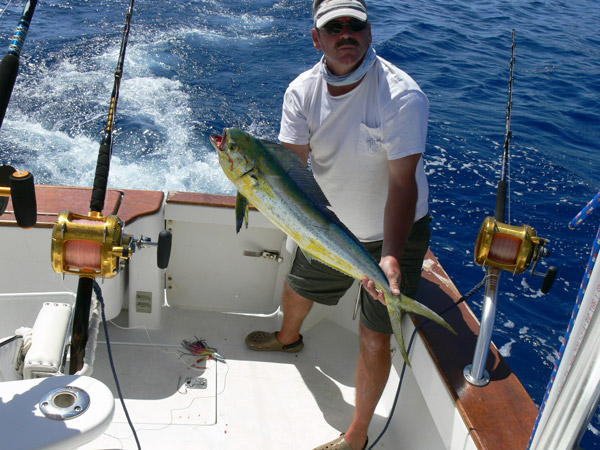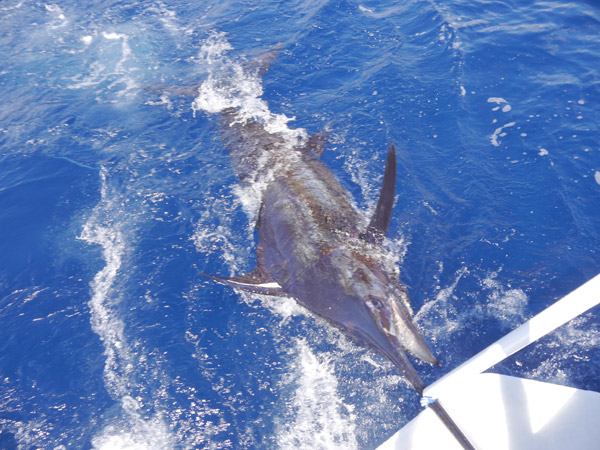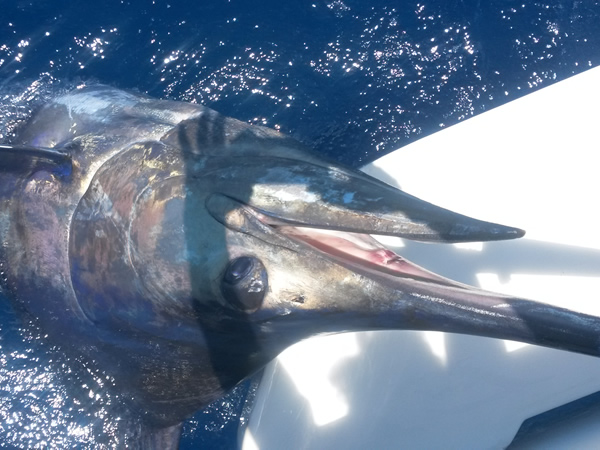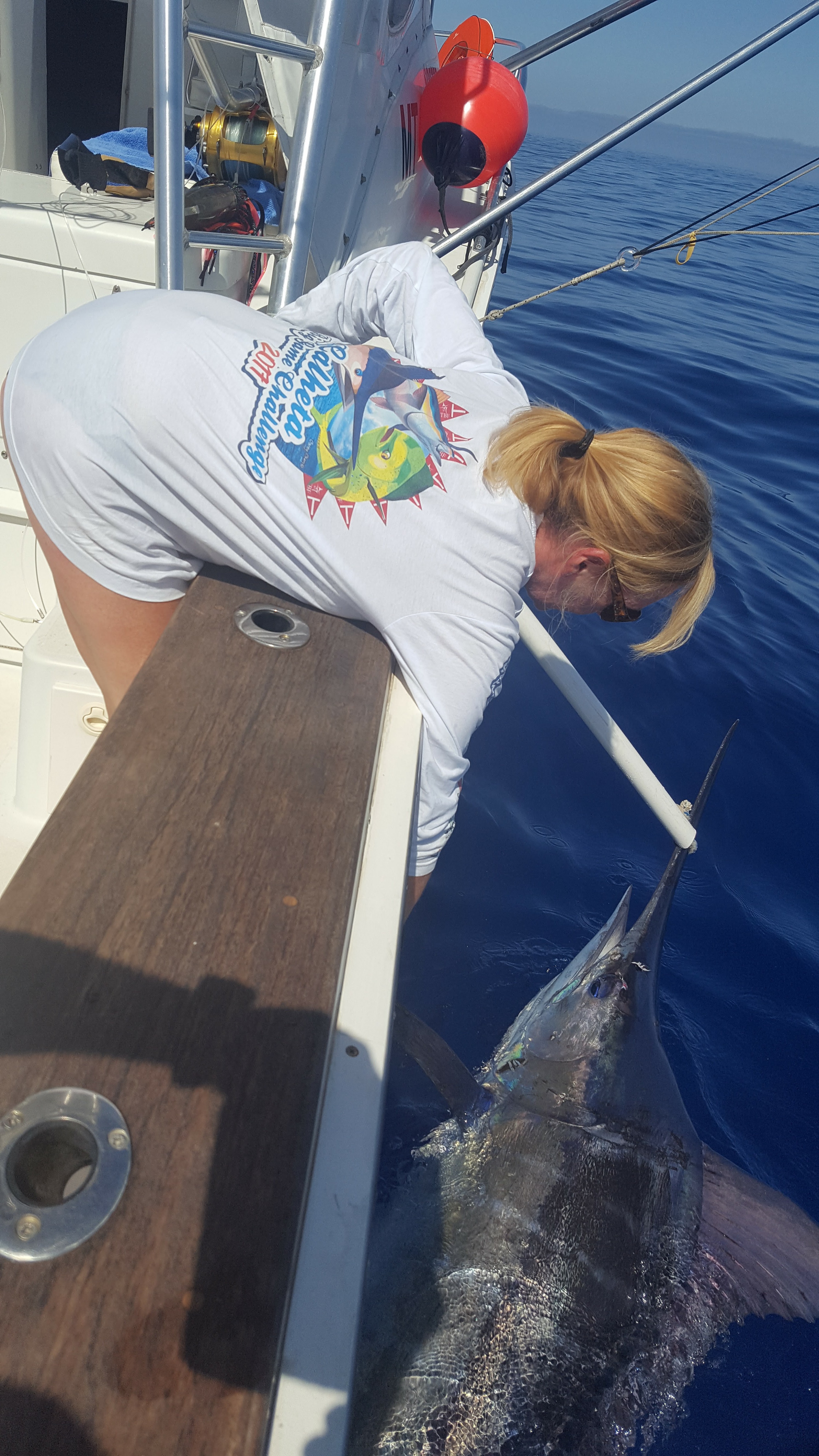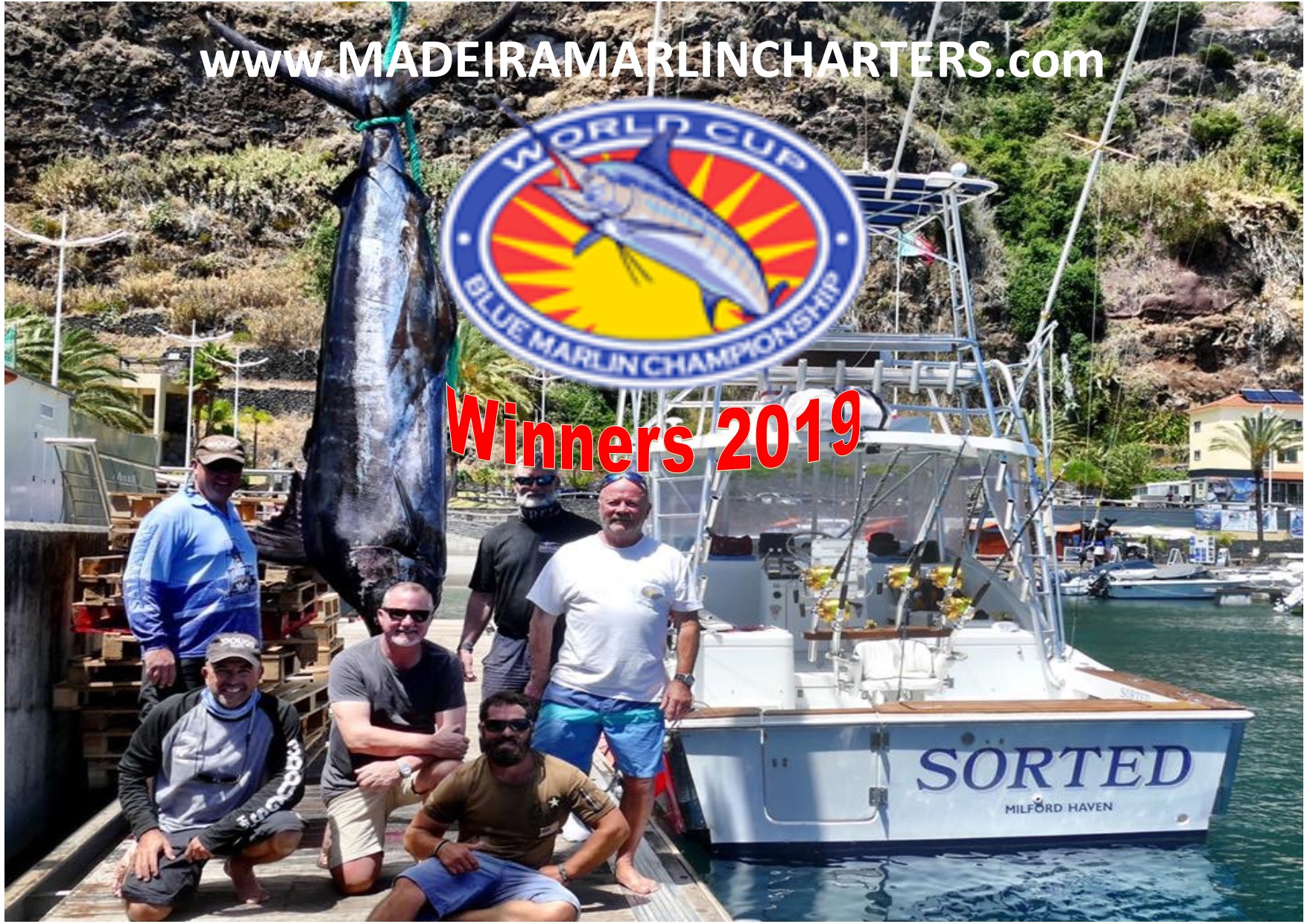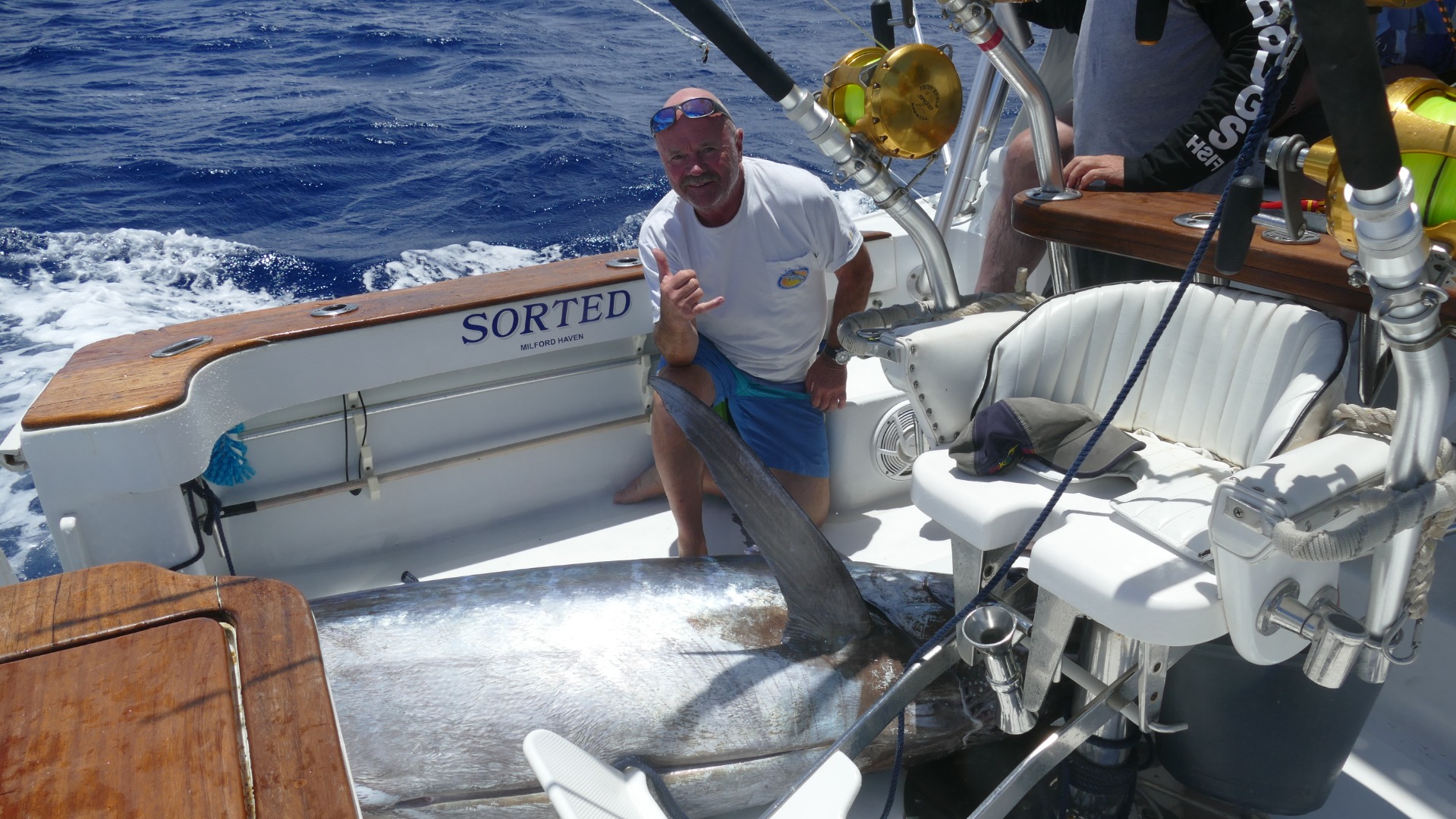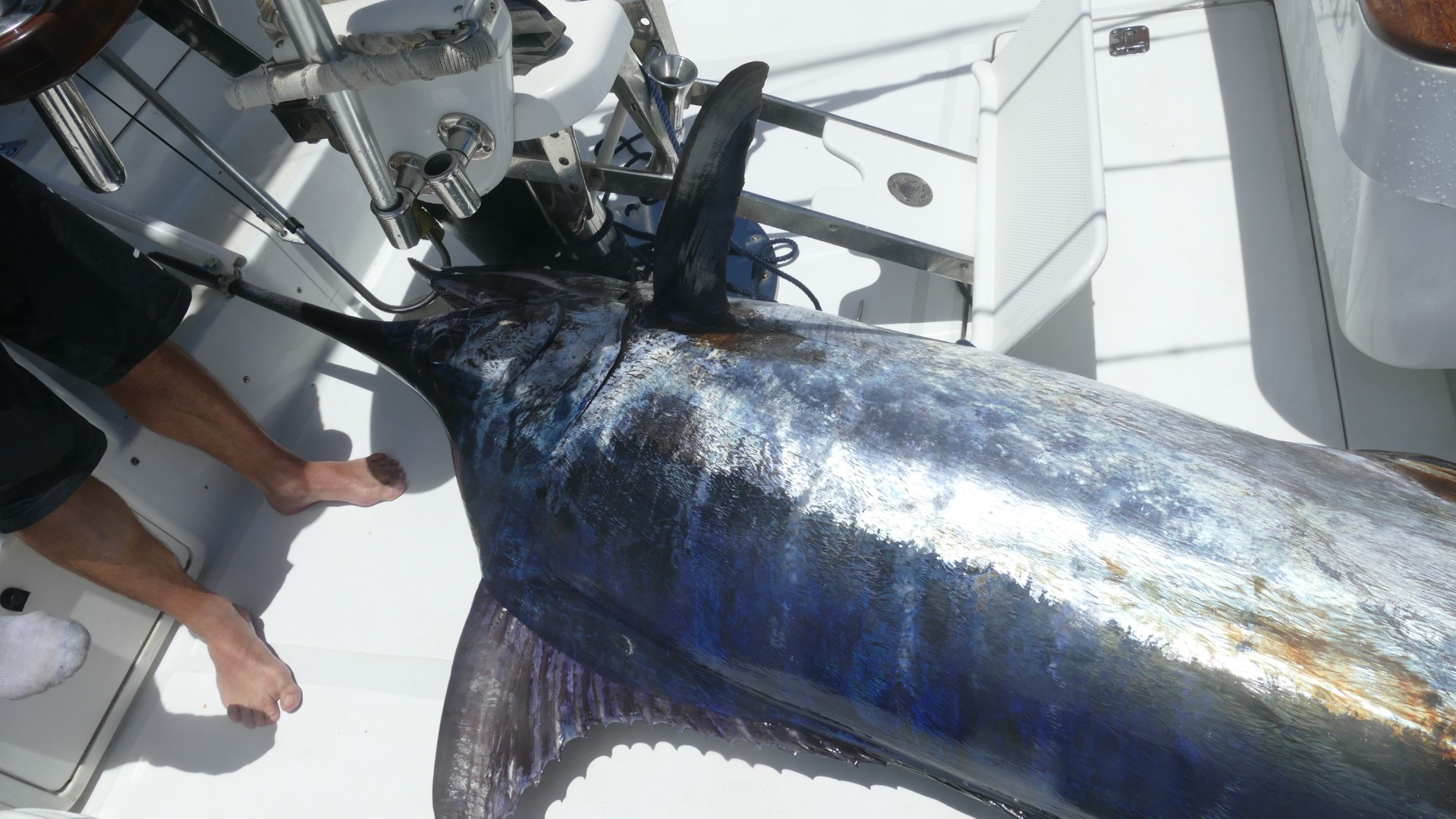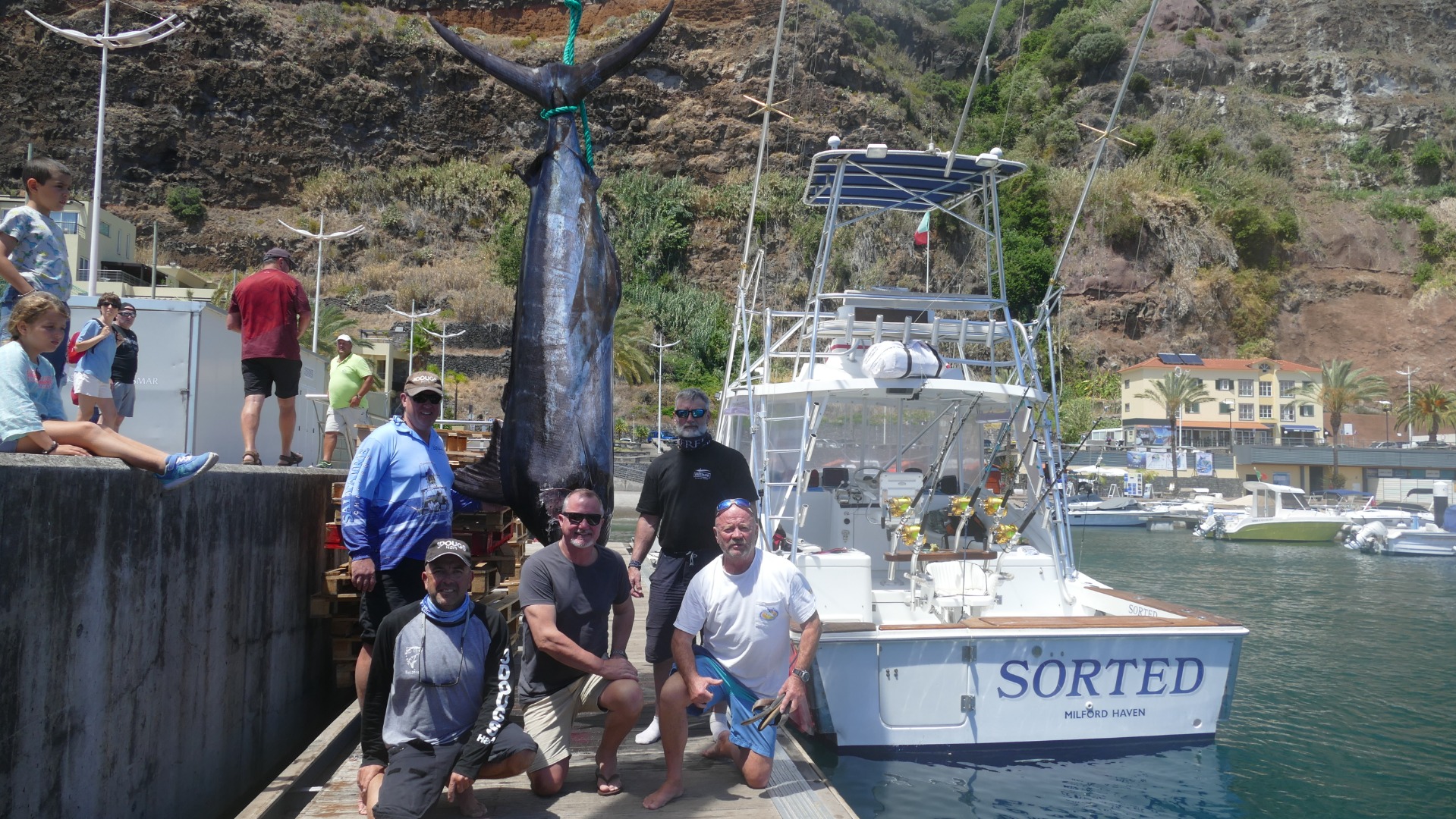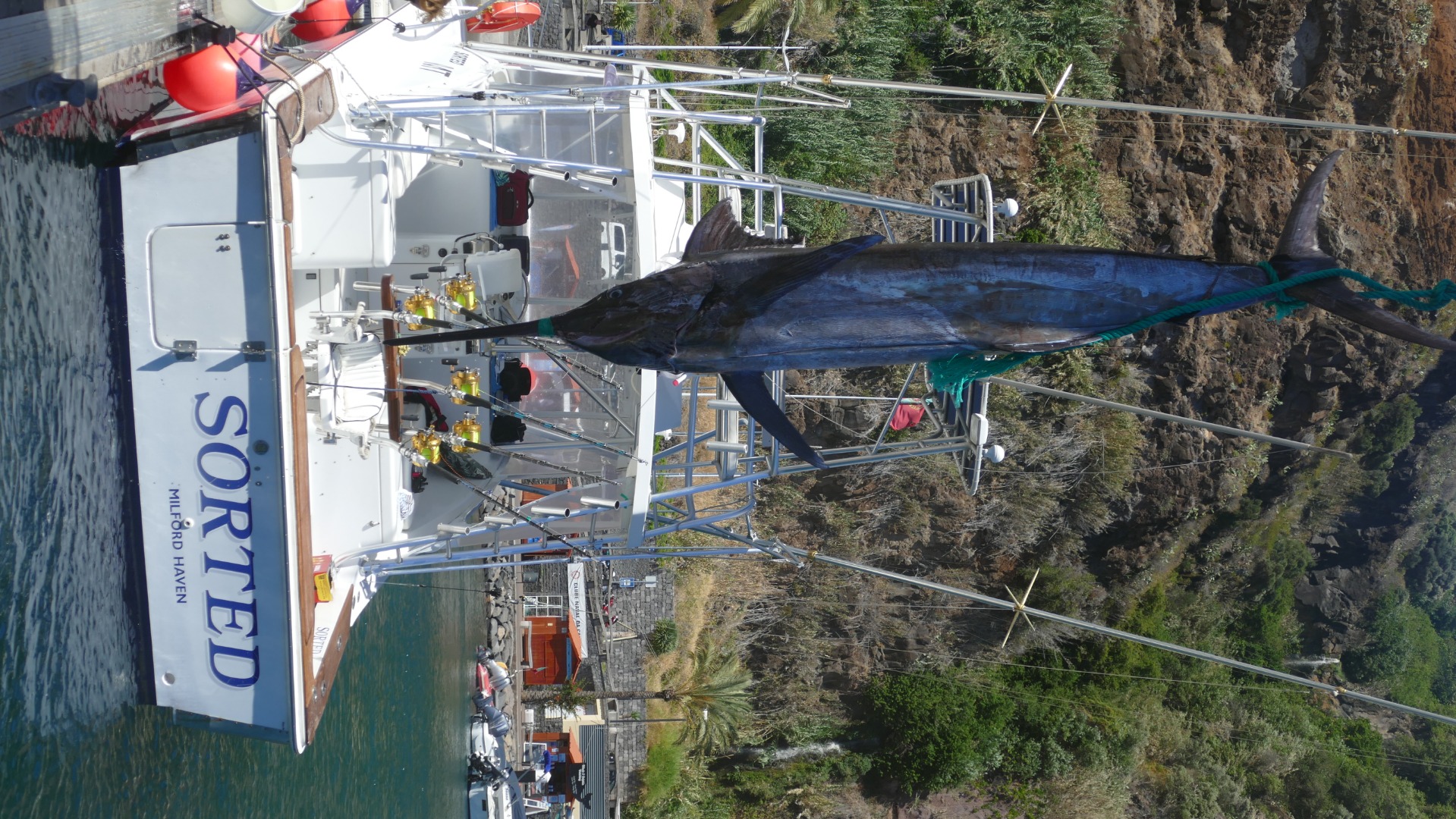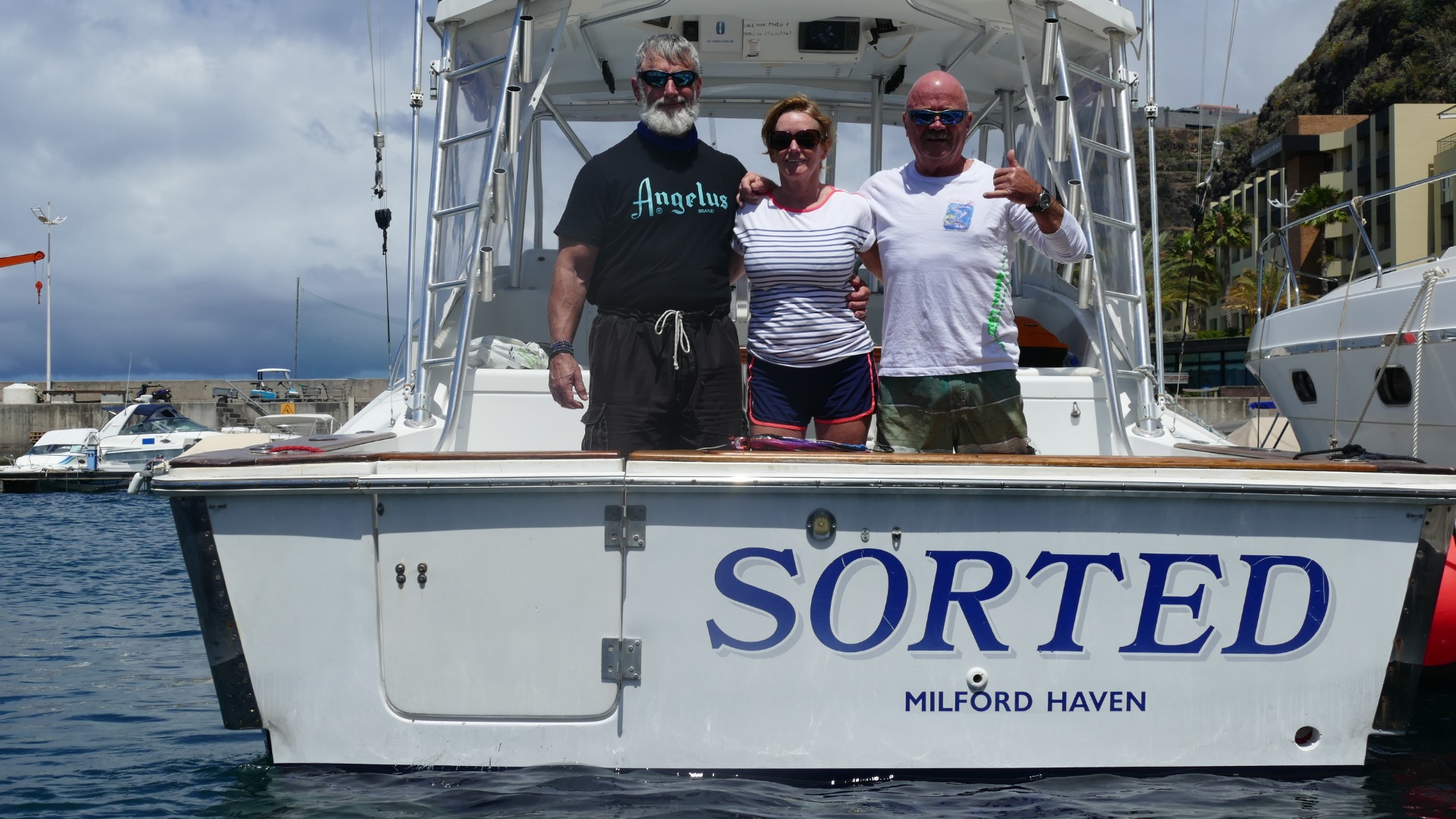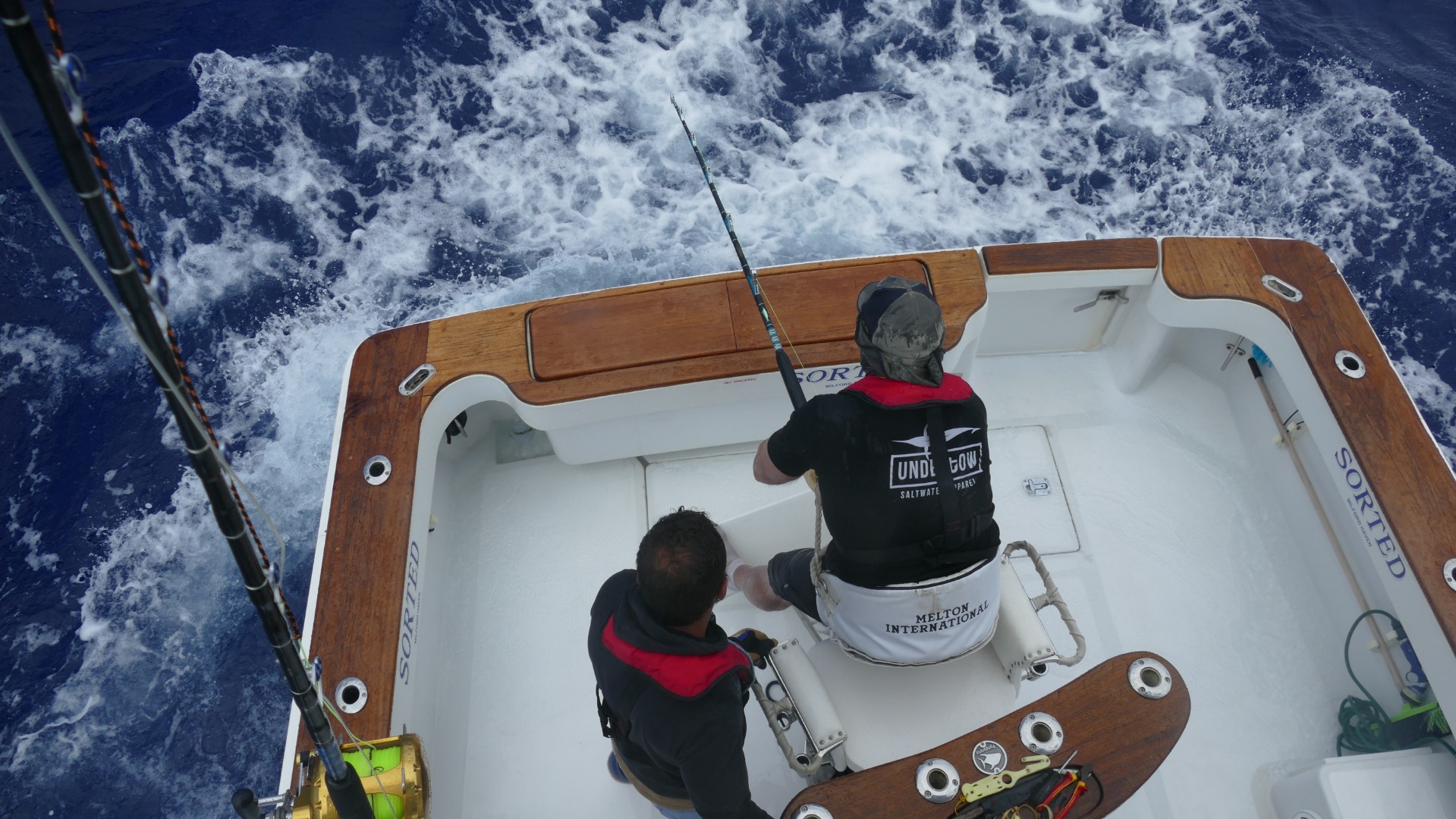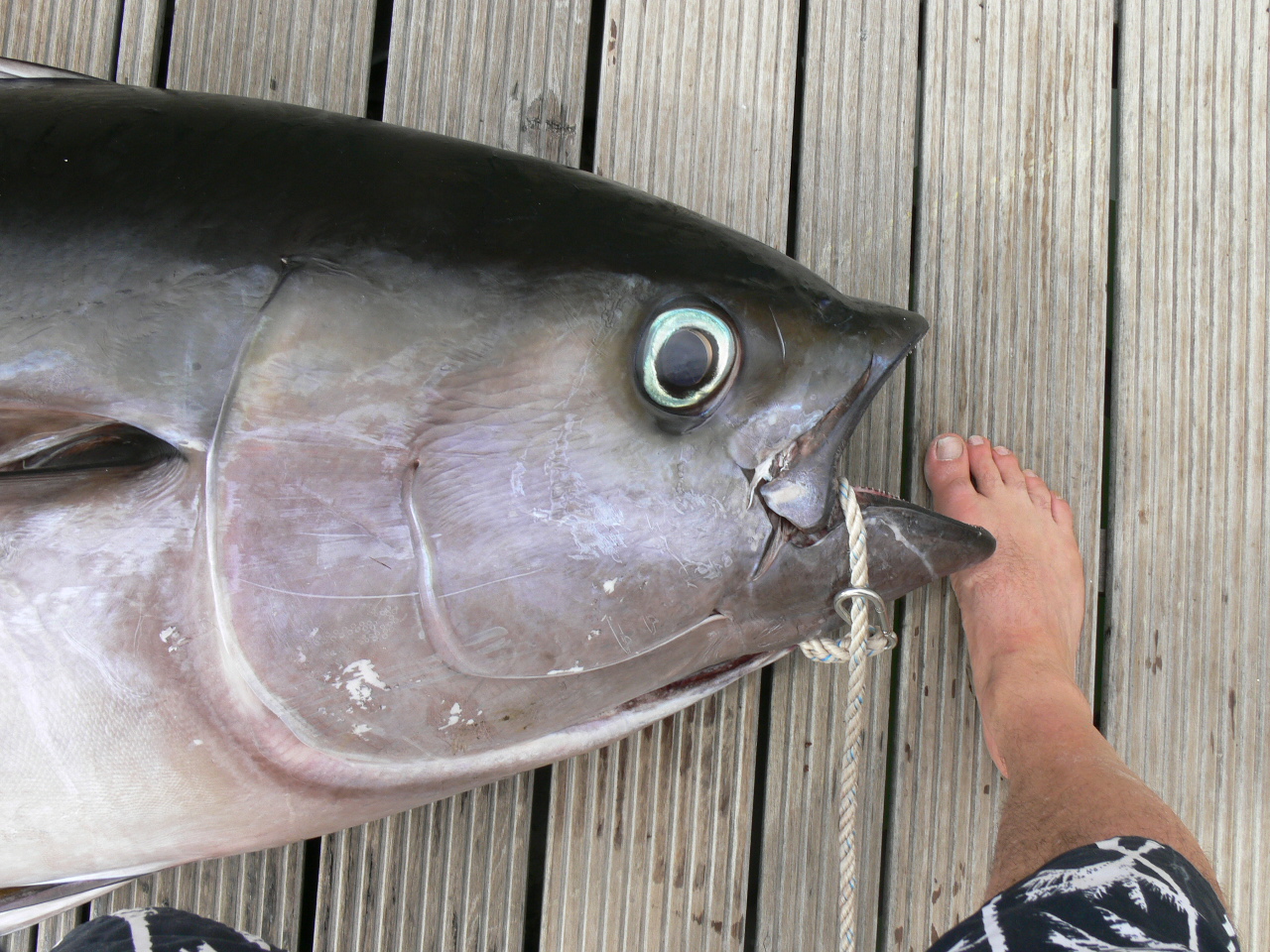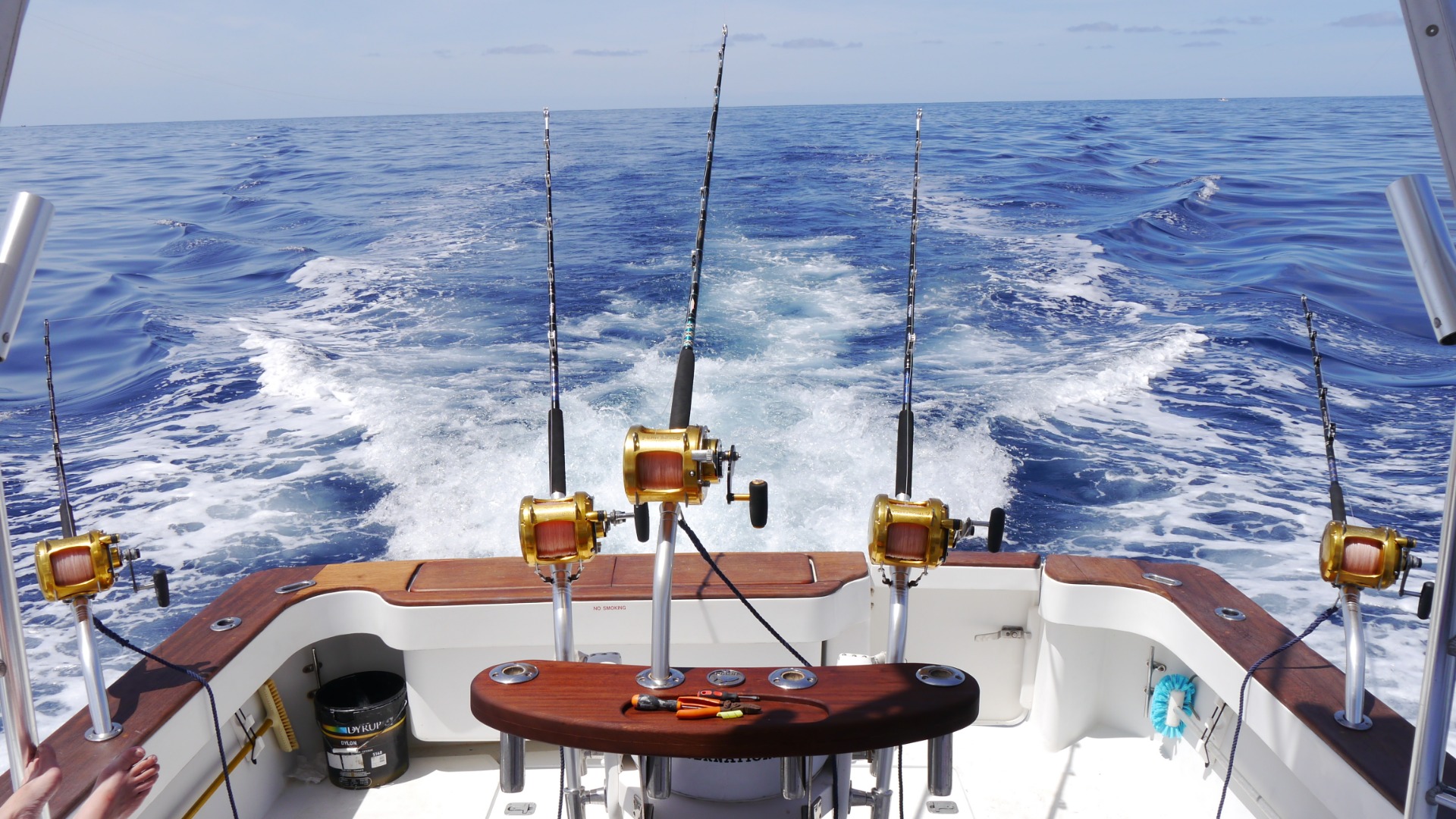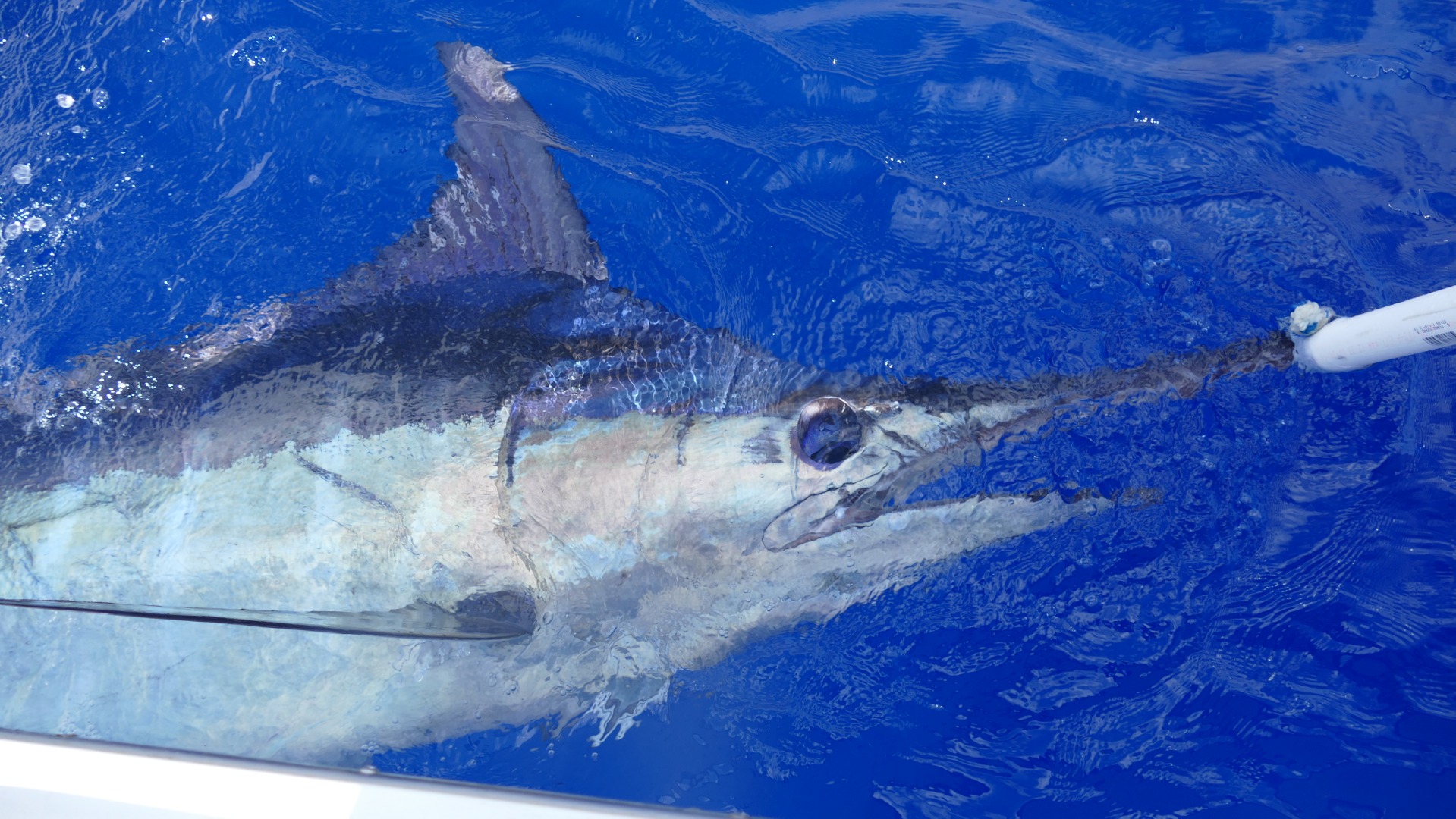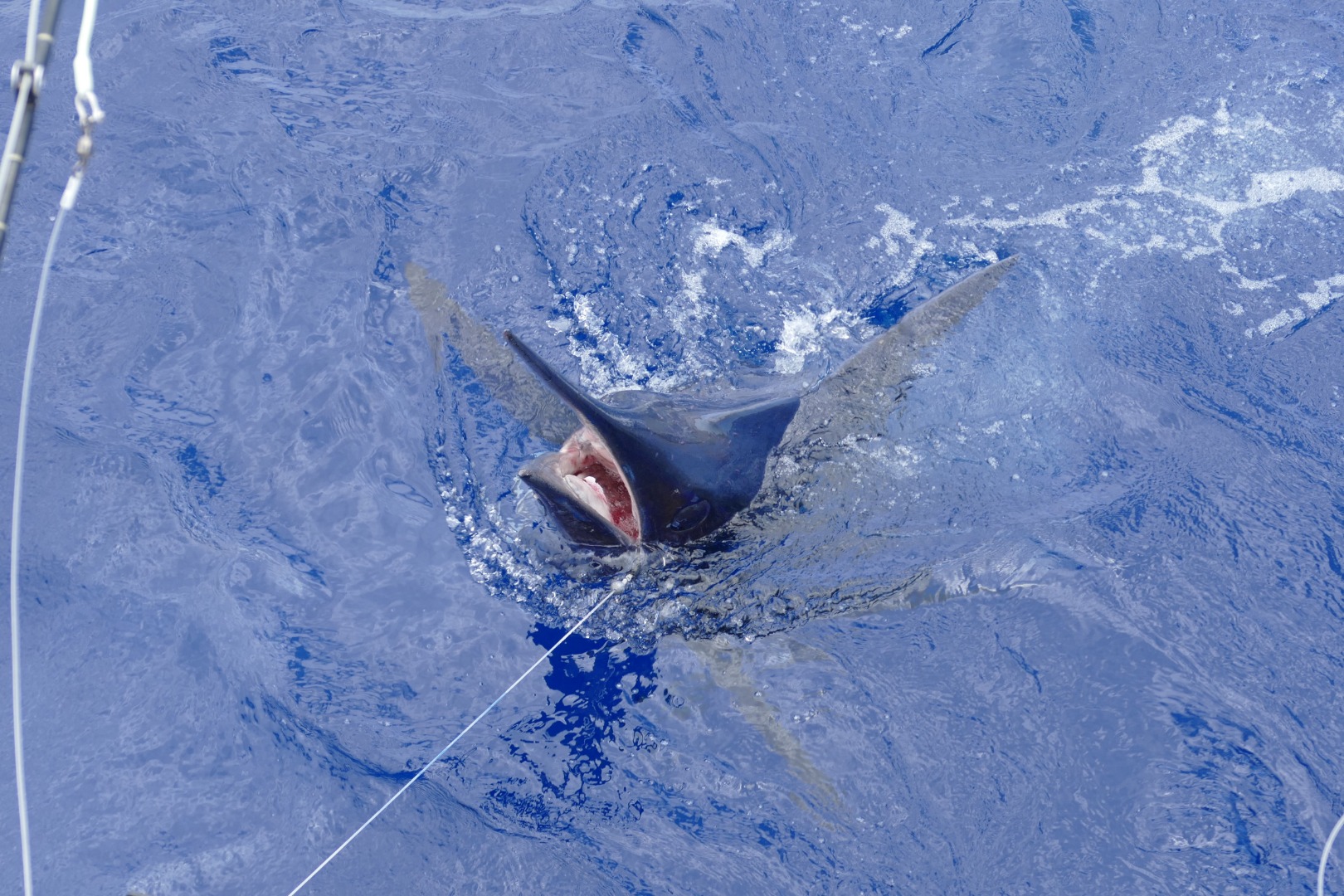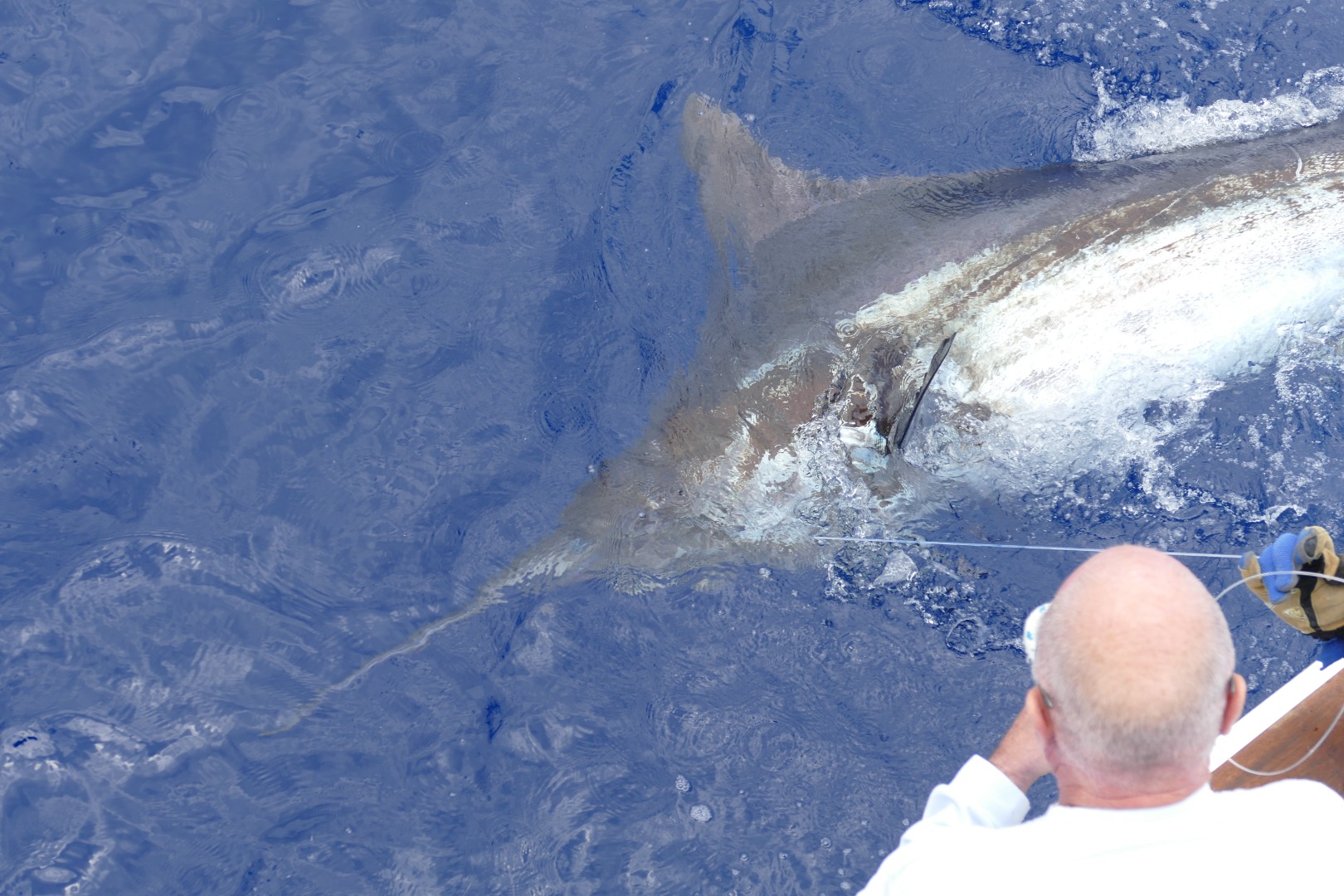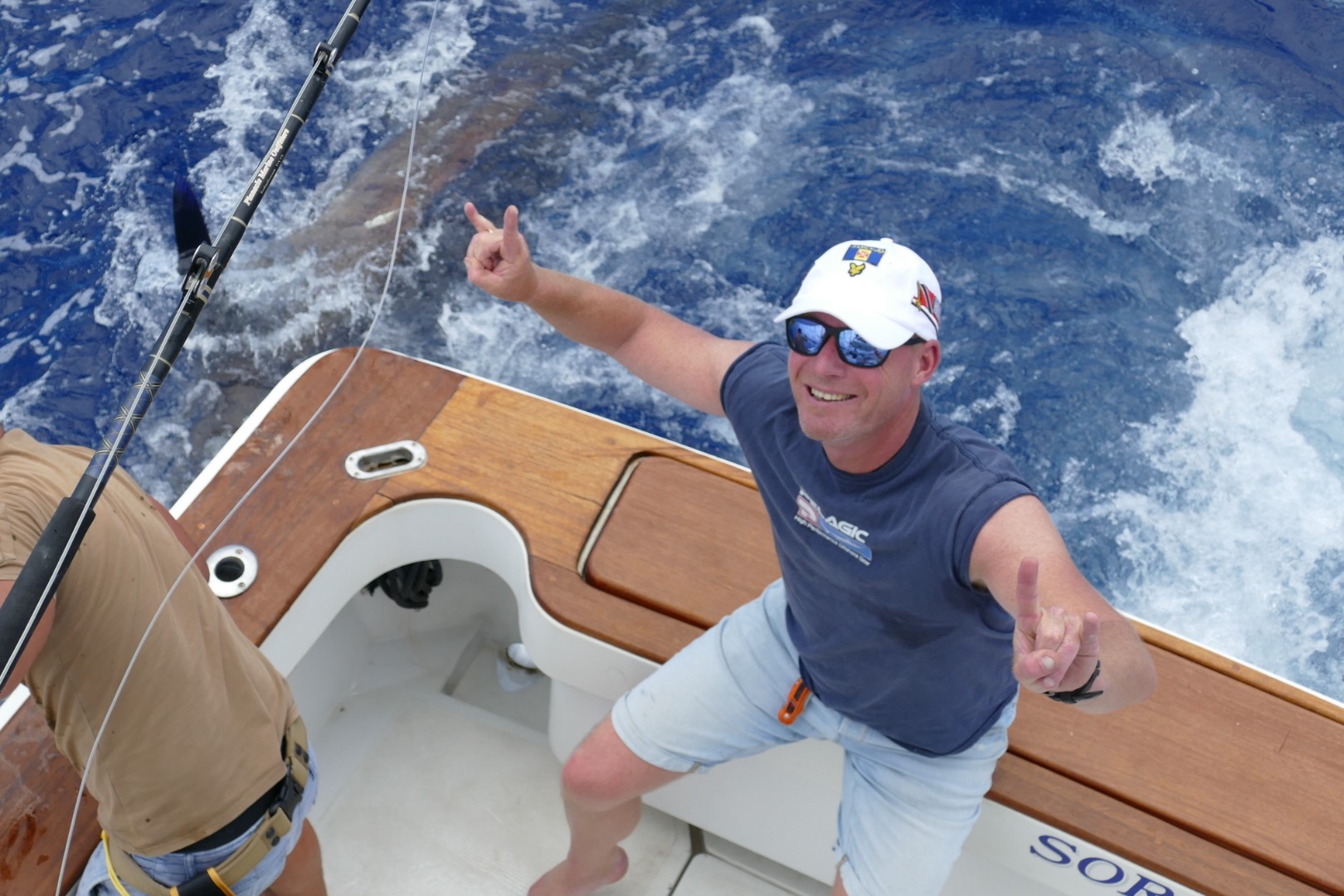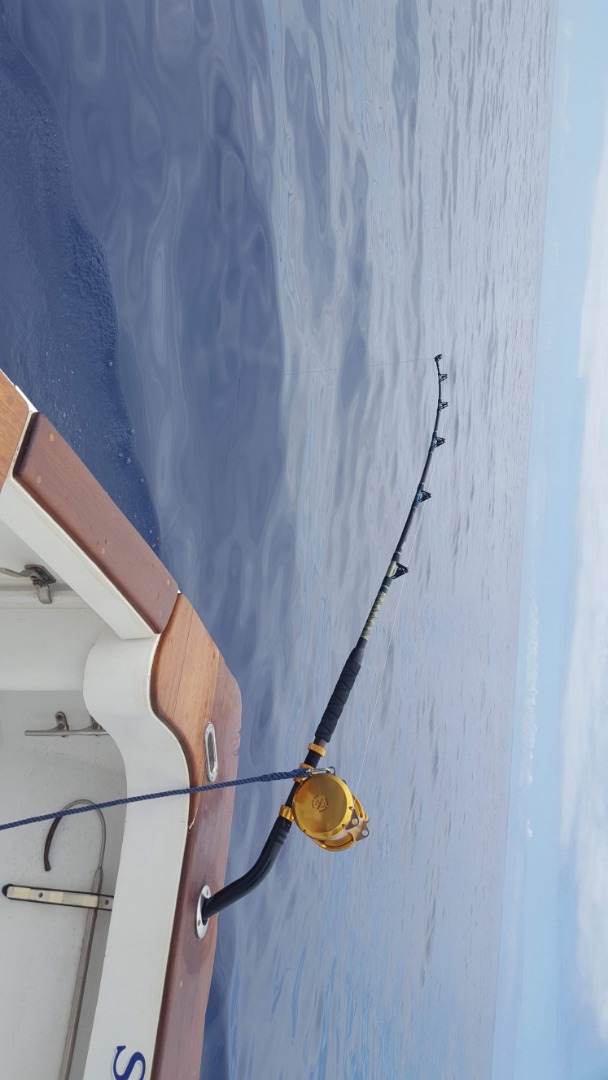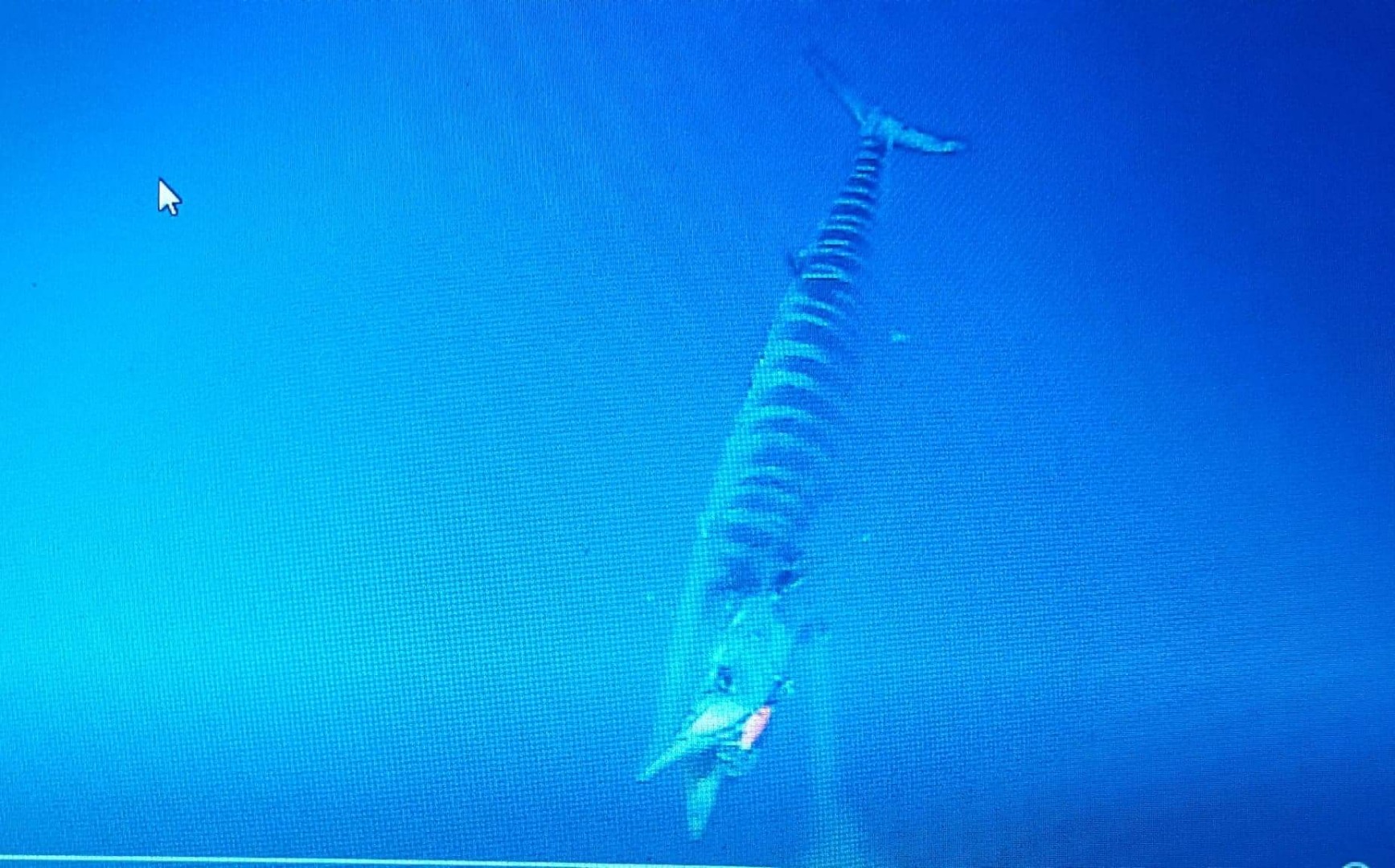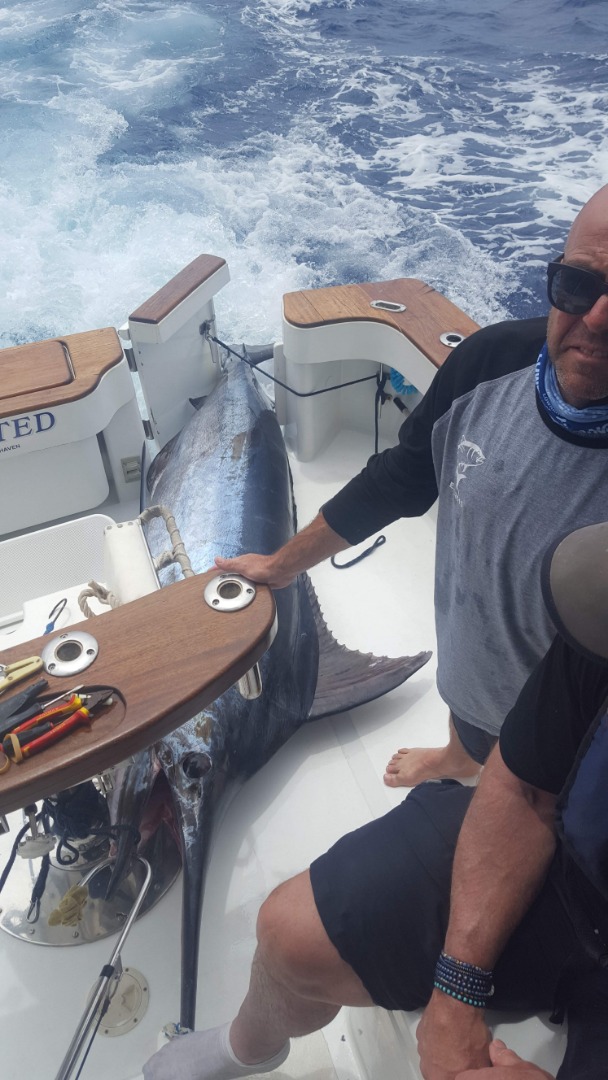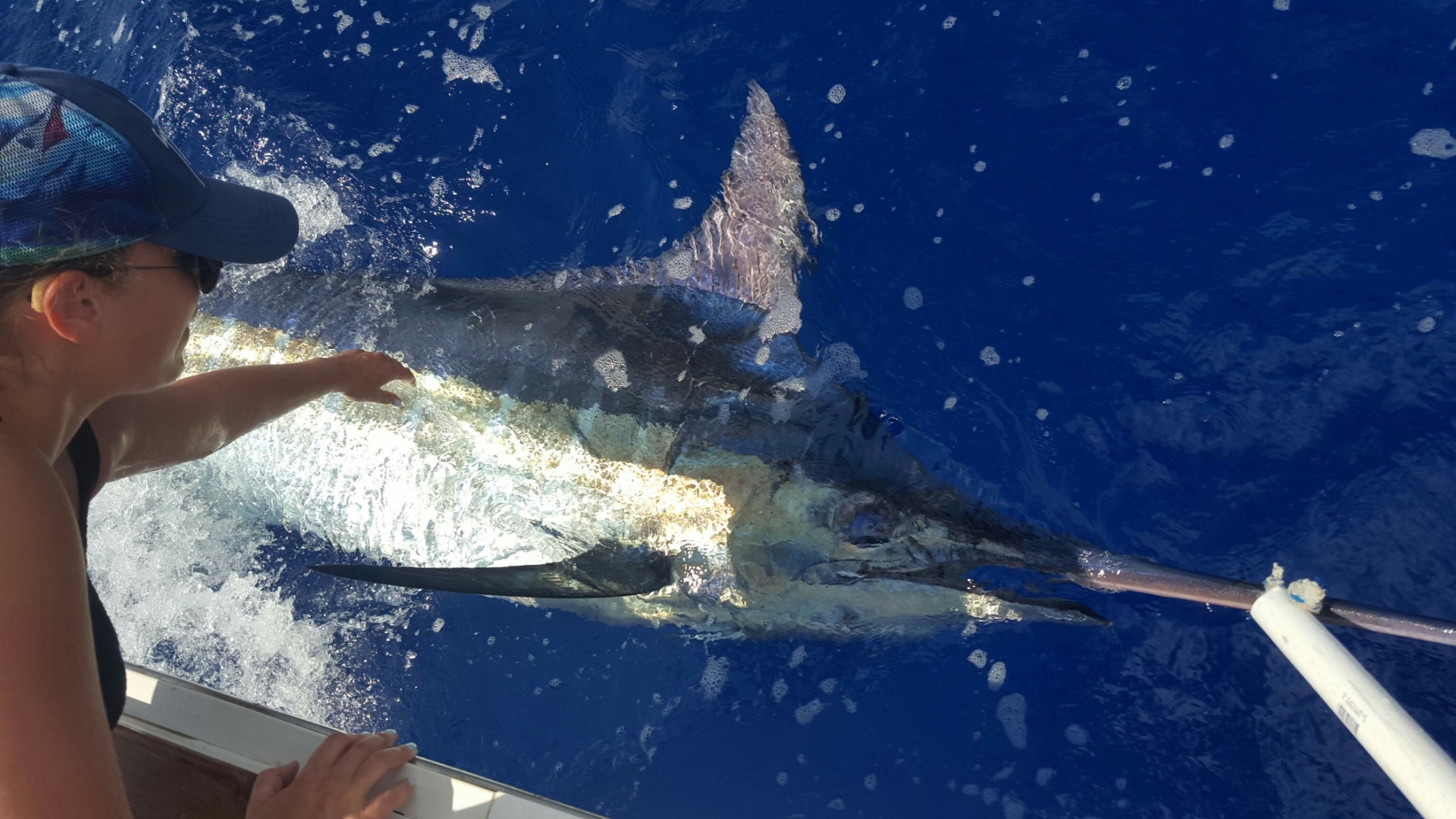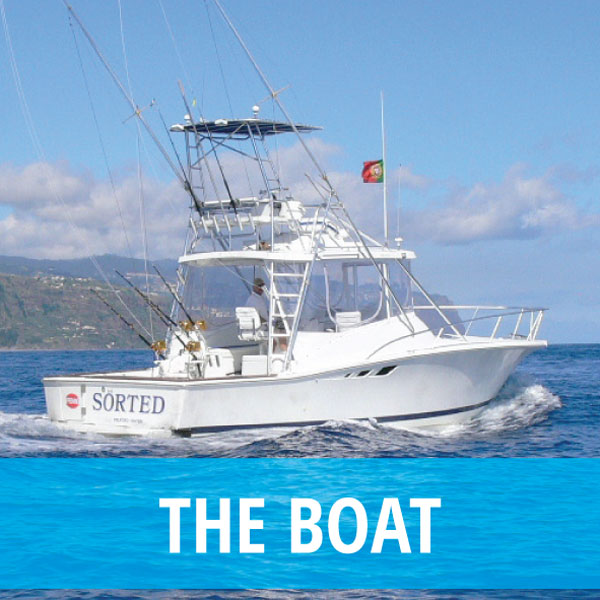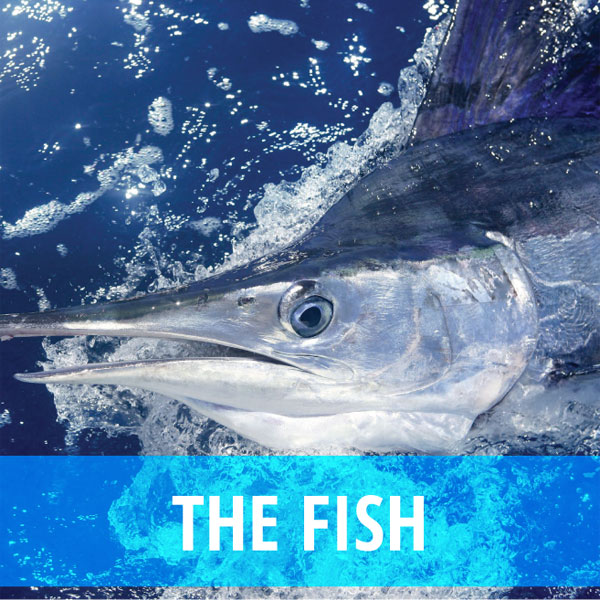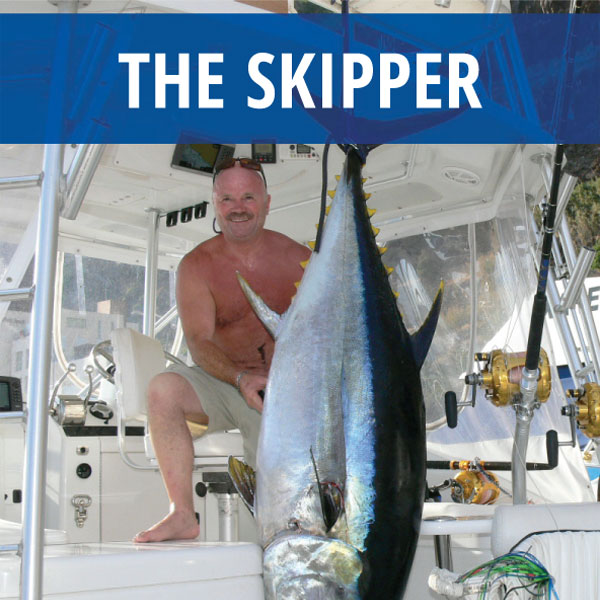The Fish
The strikingly beautiful blue marlin is the largest of the Atlantic marlins and one of the biggest fish in the world. Females, which are significantly larger than males, can reach 14 feet (4.3 meters) in length and weigh more than 1,985 pounds (900 kilograms). Average sizes tend to be in the range of 11 feet (3.4 meters) and 200 to 400 pounds (91 to 181 kilograms). Although Madeira has a far higher average size very few fish caught are below 400lbs and 1 in 10 is over 1000lbs.
Native to the tropical and temperate waters of the Atlantic, Pacific, and Indian Oceans, blue marlins are among the most recognizable of all fish. They are cobalt-blue on top and silvery-white below, with a pronounced dorsal fin and a long, lethal, spear-shaped upper jaw. They are so-called blue-water fish, spending most of their lives far out at sea. They are also highly migratory, and will follow warm ocean currents for hundreds and even thousands of miles.
Blue Fin Tuna
The Atlantic bluefin tuna is one of the largest, fastest, and most gorgeously colored of all the world’s fishes. Their torpedo-shaped, streamlined bodies are built for speed and endurance. Their coloring—metallic blue on top and shimmering silver-white on the bottom—helps camouflage them from above and below. And their voracious appetite and varied diet pushes their average size to a whopping 6.5 feet (2 meters) in length and 550 pounds (250 kilograms), although much larger specimens are not uncommon. Atlantic bluefins are warm-blooded, a rare trait among fish, and are comfortable in the cold waters off Newfoundland and Iceland, as well as the tropical waters of the Gulf of Mexico and the Mediterranean Sea, where they go each year to spawn. They are among the most ambitiously migratory of all fish, and some tagged specimens have been tracked swimming from North American to European waters several times a year.
They are prized among sport fishers for their fight and speed, shooting through the water with their powerful, crescent-shaped tails up to 43 miles (70 kilometers) per hour. They can retract their dorsal and pectoral fins into slots to reduce drag. And some scientists think the series of “finlets” on their tails may even serve to reduce water turbulence.
Bluefins attain their enormous size by gorging themselves almost constantly on smaller fish, crustaceans, squid, and eels. They will also filter-feed on zooplankton and other small organisms and have even been observed eating kelp. The largest tuna ever recorded was an Atlantic bluefin caught off Nova Scotia that weighed 1,496 pounds (679 kilograms).
Big Eye Tuna
Bigeye tuna can grow up to 250 centimetres (98 in) in length. Maximum weight of individuals probably exceeds 180 kg (400 lb), with the all-tackle angling record standing at 178 kg (392 lb). They are large, deep-bodied, streamlined fish with large heads and eyes. The pectoral fins are very long, reaching back beyond the start of the second dorsal fin in juveniles and the space between the first and second dorsal fin in adults. They have 13 or 14 dorsal spines.
Season - All year round
Wahoo
Wahoo (Acanthocybium solandri) is found worldwide in tropical and subtropical seas. It is best known to sports fishermen, as its speed and high-quality flesh make it a prize game fish.
Its body is elongated and covered with small, scarcely visible scales; the back is an iridescent blue, while the sides are silvery, with a pattern of irregular vertical blue bars and have razor sharp teeth. These colors fade rapidly at death. The mouth is large, and both the upper and lower jaws have a somewhat sharper appearance than those of king or Spanish mackerel.
Specimens have been recorded at up to 2.5 m (8 ft 2 in) in length, and weighing up to 83 kg (183 lb).[4] Growth can be rapid. One specimen tagged at 5 kg (11 lb) grew to 15 kg (33 lb) in one year. Wahoo can swim up to 60 mph (97 km/h).[5] They are some of the fastest fish in the sea.
Season - August to November
White Marlin
Albacore
Atlantic Spearfish
Dorado
Pargo ( Red Snapper)





